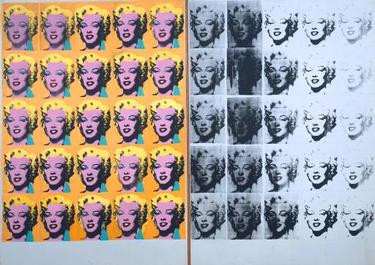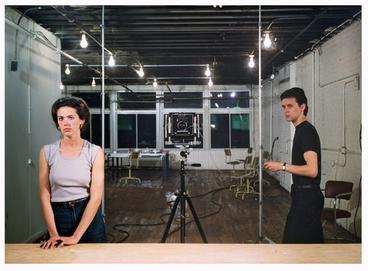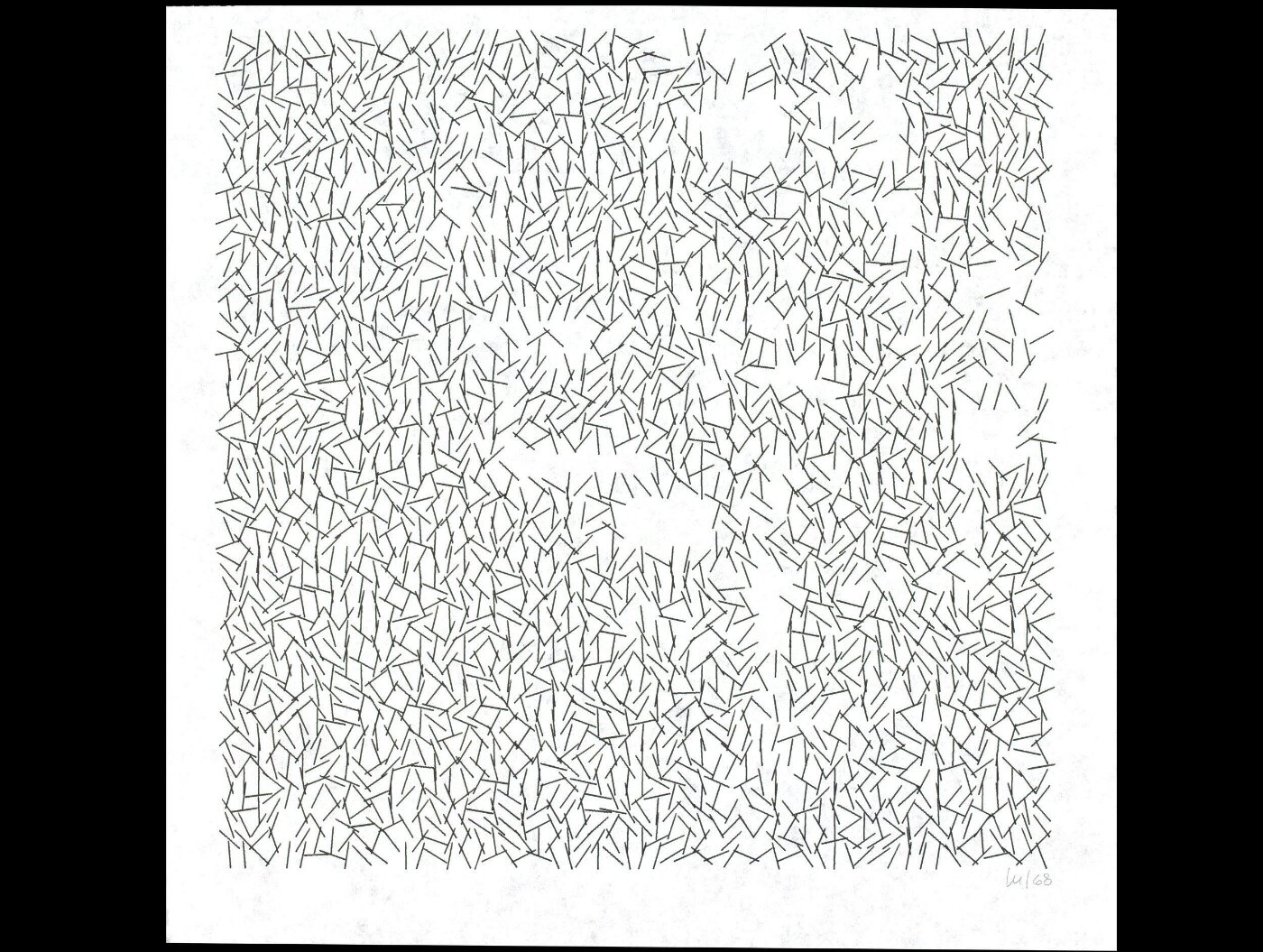Post Modern Blog
Digital Art
Marilyn Diptych
Artist: Andy Warhol
1962
Silkscreen ink and acrylic paint on canvas
Dimensions: 205.44 cm x 289.56 cm
Location: Tate, London
Artist: Andy Warhol
1962
Silkscreen ink and acrylic paint on canvas
Dimensions: 205.44 cm x 289.56 cm
Location: Tate, London
Although this is a painting, Warhol painted it on canvas to replicate the digital photograph. This canvas painting depicts the famous movie star Marilyn Monroe. It has 50 images of her. The picture was taken during the film Niagara. This portrait was taken a few weeks before her death in August 1962. The 25 portraits on the left are painted in color, and those on the right are painted in black and white. This painting is said to depict her life and death. This painting was named the third most influential piece of modern art. The survey consisted of 500 artists and critics who voted.
I chose this because I have seen it many times but never did any research. I like how they use color on one side to depict her life and black and white to depict her death. I also learned that Andy Warhol had to go to court because he did not own the photograph or get permission to use it, but it sure became a famous artwork.
Artist: Andy Warhol
1985
Screenprint in color on Lenox Museum Board
96.5 x 96.5 cm
Edition of 190 (+30 AP, 5 PP, 5 EP, 10 HC, 10 I-X, 1 BAT, 30 TP)
Apple is part of his commercial illustration work from the early 1950s. His images were for Ads, and his logos won awards from some of the top corporations in America. I chose the Apple image because I own Apple products! I like the different colors used in this logo compared to the plain white logo used today. I would rather have the colorful logo!
~~~
Dimensions: 159 x 234 cm
Location: National Gallery of Canada in Ottawa
The portrait is exhibited in Ottawa, Canada, in a lightbox. The destroyed room depicts a room with damaged items. The room has a dresser, mattress, clothing, shoes, and many other items. The wall, window, and doorway are also destroyed. I thought this piece of work was different. It is amazing how art can become an art piece, and I often wonder how in the world do images like this become art.
Artist: Jeff Wall
1979
142.5 x 204.5 cm
Jeff's inspiration for this photograph comes from a painting by Manet of a barmaid gazing. Jeff depicts a woman in a studio with a man gazing at her, and in the background, a large mirror depicts the painting. The picture follows traditional aesthetic rules of photography. It is divided into thirds, which balance both horizontal and vertical: the woman in one part, Wall's camera in the middle, and the man on the right. I chose this because I have a similar photograph of myself with a large mirror in the back and workout equipment in the other corner of my picture. When I see digital art, I think of all the pictures I have taken over the years of our community, elders, and scenic pictures.
~~~
Artist: Harold Cohen
1974
Location: United States Museum no. E.326-2009
Copyright: Victoria and Albert Museium, London
Harold Cohen, representing Britain at the 1966 Venice Biennale was a painter. He was a visiting professor in the United States at the University of California. It was there in San Diego that he was introduced to computer programming. He then was a visiting scholar at Stanford University and a scholar in the Artificial Intelligence Laboratory. He developed the computer program Aaron, a program as an act of drawing. In the early stages, Aaron could only produce monochrome lines, and he had to color to add color to this piece of artwork. I found this interesting with all the different shades of colors. I feel like it would be soothing to color or paint.
~~~
Artist: Vera Molnar
1969
Black and White plotter drawing
Dimensions: 28cm x 21.8cm
Location: Paris
Interruptions is one of the earliest computer-generated images using the iterative process. It is a series of images built over another. She modified her algorithm to build over the first. This was created with computers 56 years ago, and at the time, computer technology was new. I found this interesting because it is so simple, yet they had to program the algorithms at the time compared to the computer software we have today, which is easier to use.
Sources:
Jeff Wall Photography, bio, ideas (no date) The Art Story. Available at: https://www.theartstory.org/artist/wall-jeff/ (Accessed: 19 April 2024).
Digital Art · V&A (no date) Victoria and Albert Museum. Available at: https://www.vam.ac.uk/articles/digital-art (Accessed: 19 April 2024).






I like how Interruptions looks, it reminds me of a an imperfect crystal structure. I'm not sure how it relates to the theme, because I'm not sure what the theme is. I agree with rather having a colorful logo, so many logos nowadays are colorless and "clean".
ReplyDeleteHello Hazel, I enjoyed your post-modern blog. Especially “Picture for Women”. Jeff Wall captured the female model has a deep gaze. What is she thinking? At the time of this photo, the feminist movement was in the midst of defining equality. I think Wall captured the movement very well. I searched for the painting inspired by Edouard Manet’s painting, “Un bar aux Folies Bergère”. There have been other artists in history that have also painted themselves into the background. My curiosity led me to a Google search and found, “8 famous artists who hid self-portraits in their paintings” from CNN, https://myhealthgazette.com/the-many-hidden-health-challenges-of-different-celebrities-is/25/. The stage for the photograph looks like an abandoned classroom. What lessons is Wall portraying? Did Wall stage his photography to capture a statement or to inquire about what women think? I can really appreciate this photo 45 years later…I like that you were able to reflect on your own photography as an artist, and your self-portrait similar to “Picture for Women” It definitely made me ponder and self-reflect.
ReplyDelete